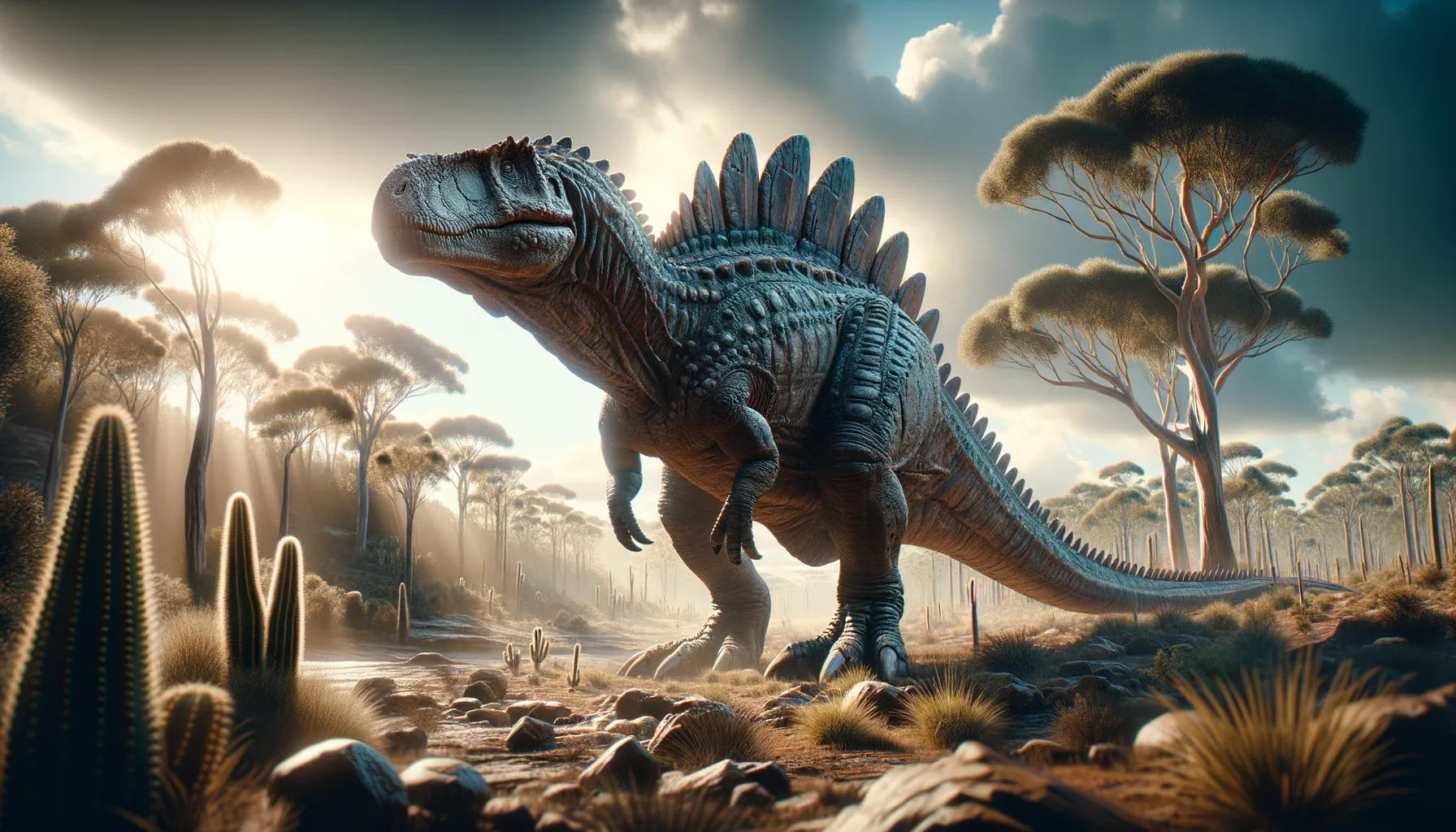
Kunbarrasaurus
A tiny tank from the ancient past.
Period
Cretaceous
Length
Roughly 4 meters long.
Height
Approximately 1.2 meters tall at the shoulder.
Weight
Around 1,300 kilograms.
Kunbarrasaurus was a small, armored dinosaur that roamed the lands of Australia during the Cretaceous period. This herbivore is noted for its heavily armored body, including bony plates and a sturdy tail used for defense. Its remains have provided scientists with valuable insights into the diversity of ankylosaurs in the Southern Hemisphere. Its small size compared to other ankylosaurs suggests that it might have adapted uniquely to its environment.
Diet
Kunbarrasaurus was a herbivore, feeding primarily on low-lying plants. Its teeth were adapted for grinding foliage and fibrous vegetation.
Hunting
As a herbivorous dinosaur, Kunbarrasaurus did not hunt. Instead, it likely spent its time grazing on plants and using its keen senses to avoid predators.
Environmental challenges
Kunbarrasaurus lived in a world filled with large predators, posing a constant threat. Its thick armor was its primary defense against these challenges. Additionally, it lived in an environment subject to climate shifts, which may have affected food availability. Seasonal variations in temperature and precipitation would have also played a role in its survival strategies.
Speed
Slow-moving due to its heavy build.
Lifespan
Potentially several decades, typical for herbivorous dinosaurs.
First discovery
Discovered in 1989 in Australia.
Fun Facts
- Kunbarrasaurus was a small armored dinosaur that lived around 100 million years ago in what is now Australia.
- The name Kunbarrasaurus means 'shield lizard,' referring to its protective bony armor plates.
- Unlike many other armored dinosaurs, Kunbarrasaurus had large, leaf-shaped teeth, suggesting it had a varied plant-based diet.
- This dinosaur was about the size of a large dog, making it one of the smaller members of the ankylosaur group.
- Kunbarrasaurus had a unique, intricate pattern of bones in its skull, which is unusual for dinosaurs in its group.
- It was discovered in the Winton Formation in Queensland, which is a rich fossil site for other Cretaceous period creatures.
- Kunbarrasaurus is known for its well-preserved fossils, helping scientists learn more about the anatomy and lifestyle of armored dinosaurs.
Growth and Development
Kunbarrasaurus likely started life as a small, vulnerable hatchling. As it grew, its bony armor would develop, providing increased protection. Growth rates may have varied depending on environmental factors such as food availability and climate.
Habitat
Kunbarrasaurus lived in what is now Australia, in an environment that included forests and open areas. It likely preferred regions with abundant vegetation to support its herbivorous diet. Seasonal changes in its habitat may have influenced its movement and foraging patterns.
Interaction with other species
Kunbarrasaurus shared its environment with various other dinosaurs, including potential predators from the theropod group. It likely used its armor and tail as defensive mechanisms. This dinosaur might have also interacted with smaller herbivores, competing for food or sharing resources.
Natural lifespan
Its natural lifespan was likely several decades.
Reproduction
Kunbarrasaurus, like other dinosaurs, reproduced by laying eggs. Clutch size and nesting sites remain topics of research, but it likely displayed some degree of parental care, crucial for the survival of its young.
Social behaviour
While direct evidence of Kunbarrasaurus social behavior is sparse, it may have lived in small groups to offer increased protection against predators. Herding behaviors in such environments could enhance foraging efficiency.
Fossil locations
Fossils of Kunbarrasaurus have been found in Queensland, Australia. These sites have provided critical insights into its anatomy and lifestyle. Their discovery helps piece together the puzzle of ancient ecosystems in this region.
